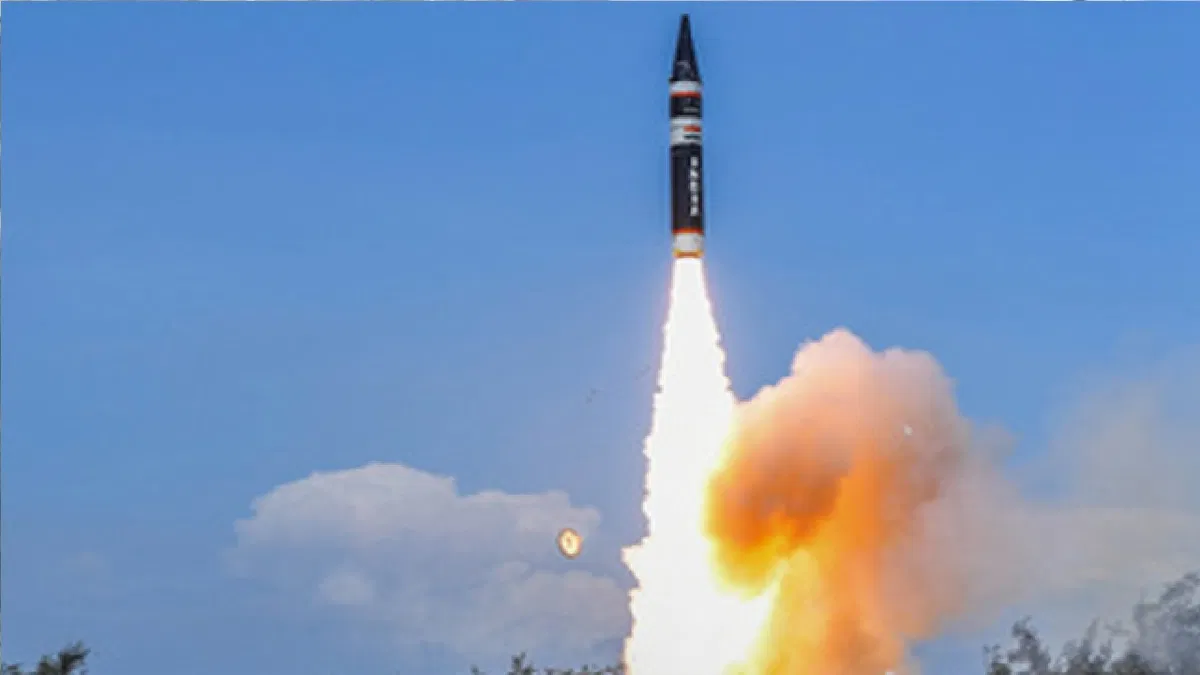Table of Contents
India achieved a significant milestone by successfully test-firing the K-4 submarine-launched ballistic missile (SLBM) from the nuclear-powered ballistic missile submarine INS Arighaat in the Bay of Bengal. This development enhances India’s nuclear deterrence and strengthens the country’s nuclear triad capabilities.
K4 Missile Key Highlights
- Missile Tested: K-4 Submarine-Launched Ballistic Missile (SLBM).
- Range: 3,500 km, capable of targeting deep into enemy territory.
- Platform: Launched from INS Arighaat, India’s second Arihant-class nuclear submarine.
- Location: Bay of Bengal.
- Significance: Demonstrates India’s second-strike capability, essential for its nuclear deterrence doctrine.
INS Arighaat: A Strategic Asset
- Commissioned: August 2024, at Visakhapatnam.
- Capabilities:
- Carries K-4 missiles (3,500 km range).
- Can deploy K-15 Sagarika missiles (750 km range).
- Fitted with advanced indigenous systems developed under India’s ‘Aatmanirbharta’ initiative.
- Power Source: 83 MW pressurized light-water nuclear reactor enabling extended underwater operations.
- Technological Edge: Features cutting-edge design, enhanced stealth, and precision weaponry compared to its predecessor, INS Arihant.
K-4 Ballistic Missile: Key Features
- Type: Submarine-launched nuclear-capable ballistic missile.
- Developer: Defence Research and Development Organisation (DRDO).
- Purpose: Strengthen sea-based deterrence, a critical element of India’s nuclear doctrine.
- Range: 3,500 km, significantly surpassing the 750 km range of K-15 Sagarika missiles.
- Launch Capability: Designed for underwater launches, ensuring survivability in a nuclear conflict.
Significance for India’s Defense
- Strengthens the Nuclear Triad:
- Complements land-based and air-based nuclear delivery systems.
- Ensures second-strike capability, crucial for India’s “no-first-use” nuclear policy.
- Enhances Strategic Deterrence: Enables India to respond effectively to adversarial nuclear threats.
- Showcases Indigenous Technology: Reflects advancements in India’s defense R&D through projects like the Arihant-class submarines and the K-series missiles.
India’s Nuclear Submarine Fleet
- INS Arihant: Commissioned in 2016, equipped with K-15 and K-4 SLBMs.
- INS Arighaat: Commissioned in 2024, an upgraded version of INS Arihant.
- Upcoming Submarines: A third Arihant-class submarine is expected to be inducted by 2025.
Strategic Importance
- Reinforces India’s position as a key maritime power in the Indo-Pacific region.
- Enhances India’s defense against evolving regional threats.
- Strengthens geopolitical influence through credible nuclear deterrence.
Conclusion
The successful test of the K-4 SLBM from INS Arighaat marks a significant milestone in India’s defense capabilities. It highlights India’s commitment to self-reliance and technological advancement while reinforcing its strategic deterrence and second-strike capabilities.


 SAMARTH Udyog Bharat 4.0: Transforming I...
SAMARTH Udyog Bharat 4.0: Transforming I...
 BHIM 3.0 Launched by NPCI: Key Features,...
BHIM 3.0 Launched by NPCI: Key Features,...
 150th Summit of Inter-Parliamentary Unio...
150th Summit of Inter-Parliamentary Unio...





















